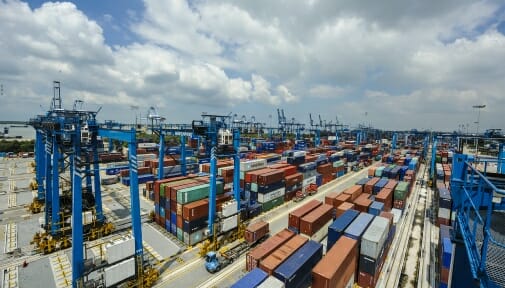Fitch Solutions is forecasting Malaysia’s current account to post a surplus amounting to 3.0% of GDP in 2021 and while revising 2020 estimate to 2.2% of GDP from 0.6% previously. The rating agency also expects the goods balance to remain robust despite risks posed by the third wave of Covid-19 infections, with imports likely to remain subdued even as external demands pick up as the region ramps up vaccination.
In this aspect, the forecast is for a current account surplus worth 3.0% of GDP in 2021, with the expectation that Malaysia’s recovery will mimic China’s in 2020 in terms of domestic demand being likely to significantly lag exports. The view of that imports would fall sufficiently to ensure that Malaysia maintains a current account surplus has
played out even as exports fall, it has done so to a larger extent than had been previously expected. Additionally, a slight recovery in exports from Q3 have further supported the current account balance. Where the financial account is
concerned, there is subdued outlook in 2021, given that much of the global economy will likely be focused on the
capital needs at home as they recover from the pandemic.
Indeed, imports have consistently been in contraction since April 2020 at an average pace of -6.2% y-o-y and even as
exports returned to expansion beginning in August 2020, imports remained well in contractionary territory (see chart
below). As a result, the goods balance reported a surplus equal to 9.0% of GDP in Q320 – the highest figure since Q118 when it came in at 9.1% of GDP – resulting in an overall current account surplus amounting to 3.5% of GDP.
Over the course of 2021 Fitch expects a strong goods surplus to lend support to the overall current account balance.
Imports are likely to continue lagging exports to a significant degree. While most of the region has managed to keep the Covid-19 situation under control, especially key trading partners Singapore and China, Malaysia is struggling with an aggressive third wave of infections since October 2020 that has affected mainly the capital Kuala Lumpur and the
surrounding state of Selangor. New cases reached a new high of 2,525 on 31 December 2020 and have remained
elevated since, such that the risks of the outbreak spreading beyond Selangor are significant. This would apply heavy
downside pressure on the domestic economic, especially if greater restrictions have to be imposed later in 2021,
painting a dim picture for domestic demand.
Furthermore, the goods balance is likely to benefit from stronger palm oil prices in 2021, given the weak outlook for the USD as well as a spate of bad weather disrupting harvests that is likely to continue in January 2021. Crude palm oil prices had already posted strong, double digit growth in 2020 at an average monthly pace of 31.2% y-o-y for the year until November. As a result, daily prices reached MYR3697.0/tonne on January 4, the highest level since the beginning of
- Palm oil accounts for around 4.5% of total exports and around 43% of commodity exports. While the overall view is for a strong goods balance and in turn, current account surplus, the extent of the surplus will likely be limited by the MYR’s rally against the USD over the course of H220 and still elevated levels around MYR4.05/ USD. Indeed, there will continue to be more USD weakness over 2021, given the likelihood for both fiscal and monetary policy to remain loose, compounded by uncertainties around policymaking, in particular the ability of the incoming Biden administration to enact policy in the event the Republicans retain control of the Senate.
Meanwhile, expect to see more challenging investment backdrop for Malaysia in 2021, given the muted
prospects from foreign investment, direct or otherwise, into Malaysia. Malaysia in particular, is likely to prove an even
less attractive prospect for investment due to heightened political risk and the ongoing third wave of infections.
Compounding the negative trends is the fact that the government has been relaxing safeguards against graft and
corruption by reviving political patronage in a bid to secure its position. Portfolio net outflows amounted to 3.0% of GDPin both Q220 and Q320, following a 5.1% outflow in Q120. Other investment also saw net outflows 2.1% of GDP in Q3.
-Fitch Solutions-









